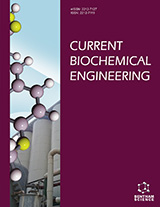Abstract
Background: Utilization of animal wastes in algal culture has proven to be challenging. The utilization of “free” nutrients has drawn researchers and industry to develop business models that call for the use of these free nutrients, which comes at a cost. Some of these costs include reduced productivity, increased contamination, lower value target markets, and lower treatment capabilities (for wastewater treatment applications). This paper evaluates the impact of dairy lagoon effluent on productivity and wastewater treatment ability.
Methods: Screened dairy lagoon wash water was fed to four three square meter outdoor open paddlewheel algal cultivation reactors. The units were operated semi-continuously for one and a half years. Seasonal productivity and nutrient uptake rates, for nitrogen (N) and phosphorous (P) were measured against wastewater dilution requirements. Seasonal algal species dominance was also recorded. Wastewater was added at two levels, and the lower level was supplemented with synthetic fertilizer.
Results: Seasonal N uptake rates ranged from 0.5 to 1.2 grams of N uptake per square meter per day, while P uptake ranged from 0.17 to 0.3 grams of P per square meter per day depending on season and Hydraulic Residence Time (HRT). N removal efficiency ranged at 40 to 70% for semicontinuous operation, depending on HRT, season, and dilution of influent wastewater, which was made up from 1.5% to 13% of the daily water exchange.
Conclusion: Algal reactors tended to be N limited due to the inability to add enough dairy wastewater to mitigate the high turbidity and dark color. Treatments with lower levels of added dairy wastewater tended to show higher nutrient removal. Algal culture from dairy wash water could benefit from a pretreatment step to reduce turbidity and color, thereby promoting algal growth and productivity.
Keywords: Microalgae, dairy wastewater, nutrient removal, algal productivity, high rate ponds, wastewater recovery.
 12
12


















